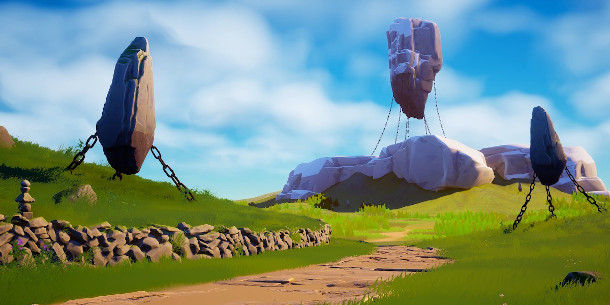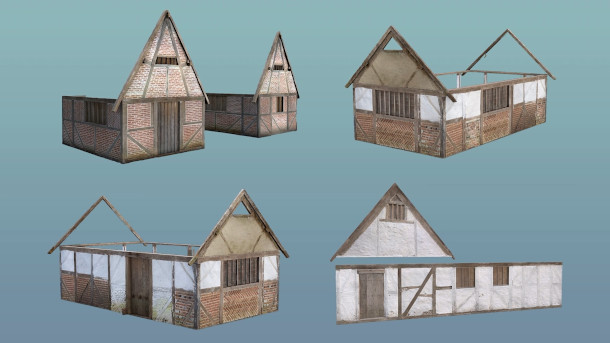See the new features due in Megascans and Quixel Mixer
Quixel has previewed some of the new features coming up in its Megascans ‘ecosystem’, including the Megascans library of real-world 3D scan data and material-authoring tool Mixer.
The content was previewed during a webinar last week, the recording of which is embedded above.
Mixer will get support for multiple texture sets and the UDIM UV layout format, plus new features geared towards creating more stylised, painterly textures.
Megascans itself will get new modular 3D content and new scans based on drone footage. Quixel also showed off its R&D on a new Megascans pipeline for entire 3D trees, though that looks to be further away.

Due in Mixer: new tools for creating stylised materials to retexture existing assets
The first part of the webinar runs through Quixel’s history and its recent acquisition by Epic Games, so the first new features show up in the section on Mixer at 12:55 in the video.
In contrast to the photorealism for which Megascans is known, the demo shows the new Smart Material system added in Mixer 2020 in use to create a custom material suitable for use in a stylised-looking game.
“Stylisation is a really important part of what we’re hoping to achieve with Mixer,” commented Epic Games product evangelist Galen Davis.
“Bringing a physically based scanned photorealistic object [into Mixer] and making it look like something that could fit inside of Fortnite is now entirely possible.”
According to director and co-founder Teddy Bergsman, Quixel is now “working to extend Mixer with more functionality to allow you to stylise assets”, and “many more” readymade stylised Smart Materials.
Bergsman also noted that Quixel aims to add support for multiple texture sets and Mari’s UDIM UV layout format, now widely supported in other material-authoring tools, in the “next big release”.

New in Megascans: new modular content and content based on drone scan data
At 22:40 in the video, you can see some of the new content due in the Megascans library itself.
That includes materials from scanning trips to the north of Sweden and Japan, including new snow objects and materials, and materials based on abandoned buildings and Japanese temples.
Quixel has also established a new scanning team working with drone footage, suggesting that scan data of larger-scale geographical features should become available in Megascans in future.
Bergsman also mentioned that Quixel is working on “modular content” for the library: “real-world 3D objects that have been conformed to very specific measurements so they work nicely with procedural systems”.
As an illustration, Quixel showed the image above: an exploded view of parts of a house that can presumably be recombined procedurally to create custom 3D buildings.
Finally, at 29:30 in the video, Quixel shows R&D work on its “most-requested asset type by far”: entire trees.
Bergsman notes that development is “not done yet”, and the footage only shows the bases and lower trunks of the trees, suggesting that a public release may be some way off, but the results look beautiful.
Pricing and system requirements
All Megascans assets are now free to Unreal Engine users for use in UE4 projects.
For other work, Personal subscriptions cost $19/month. Indie subscriptions, intended for teams with under $2M/year in revenue, cost $199/month; Pro subscriptions cost $999/month.
Mixer is available free for Windows and macOS. The software is officially in beta.
Read more about the Megascans library and support tools on Quixel’s website
